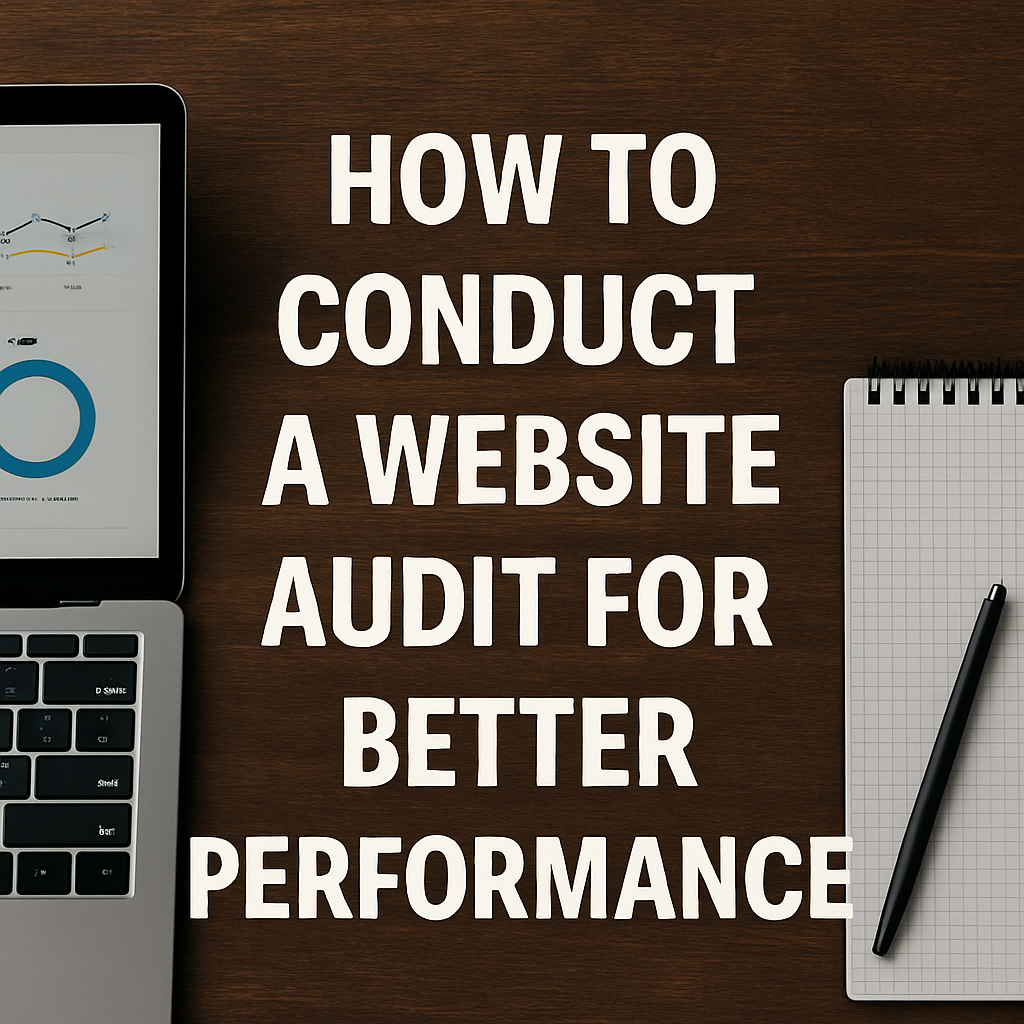How to Conduct a Website Audit for Better Performance
Conducting a website audit is a vital part of ensuring your digital presence is effective, functional, and optimized for both users and search engines. How to conduct a website audit for better performance is a question many businesses ask when they notice declining traffic, reduced conversions, or slow load times. A comprehensive website audit for better performance gives you insights into technical issues, user experience problems, SEO gaps, and content opportunities that can boost overall performance and help you meet your online goals.
From broken links to outdated design elements, performance issues can silently hinder your website’s potential. In this guide, we’ll walk through the major components of a website audit and how to take actionable steps to improve each area.
Technical Health and Site Speed
One of the first steps in learning how to conduct a website audit for better performance is analyzing your site’s technical health. A technically sound website loads quickly, functions smoothly on all devices, and remains accessible to both users and search engines.
Begin by checking your website speed using tools like Google PageSpeed Insights or GTmetrix. These platforms can identify what’s slowing down your site—whether it’s unoptimized images, unused CSS, or excessive scripts. Mobile-friendliness is another critical factor, as Google prioritizes mobile-optimized websites in its rankings. If you’re not sure whether your site meets current standards, consider working with a reliable Web Design Services provider who can evaluate and redesign with performance in mind.
SEO and On-Page Optimization
When conducting a website audit for better performance, your SEO setup should be one of your main priorities. Evaluate your meta tags, page titles, URL structures, and header tags. Ensure that each page targets the right keywords and that there are no duplicate meta descriptions or missing alt text.
An SEO Services provider can assist in identifying gaps and applying fixes to improve your search engine visibility. Keywords should be used naturally and not stuffed into content, while ensuring proper hierarchy of headings and internal linking. Don’t forget to review your XML sitemap and robot.txt files, which help search engines properly crawl your site.
Content Quality and Strategy
Your website’s content should always align with the needs of your audience. During your audit, check whether your existing content is relevant, up to date, and optimized for both SEO and readability. Is your blog content engaging? Are your service pages clear and informative?
Having a WordPress Website Design or Custom Code Website Design setup that supports dynamic and editable content makes it much easier to keep things fresh. Remember to analyze bounce rates and session durations—these can indicate whether your content truly resonates with users or not.
User Experience and Site Structure
A good user experience (UX) ensures visitors can navigate your website intuitively. As you assess how to conduct a website audit for better performance, review your website structure. Can users find the most important pages within two to three clicks? Are the menus organized and consistent?
Also, check for broken links, 404 pages, or outdated navigation elements. Every detail impacts how long users stay and how likely they are to convert. If your bounce rates are high, this may signal a confusing layout or a lack of trust signals such as testimonials or contact information.
Security and Accessibility
An often-overlooked area in a website audit is security. Ensure your SSL certificate is active and that your website is served over HTTPS. Check for any outdated plugins or platforms, especially if you’re running a CMS like WordPress.
Accessibility should also be a part of your audit. Make sure your website is usable for people with visual or physical impairments. Tools like WAVE can help you evaluate accessibility compliance, which is essential for creating a fully inclusive web experience.
Marketing Tools and Analytics
Another critical component in how to conduct a website audit for better performance is evaluating your marketing stack. Is Google Analytics set up properly? Are you tracking the right conversion goals? Do you use heatmaps or user recordings to understand behavior?
If your digital marketing campaigns aren’t performing as expected, check how well your website integrates with your Digital Marketing Services and PPC Services tools. Poor integration can result in misreported data, lost leads, or missed engagement opportunities.
For expert auditing and diagnostics, Moz’s Beginner’s Guide to SEO offers a helpful, detailed walk-through of SEO best practices that you can apply alongside your full-site audit.
Visual Appeal and Branding
Strong branding reinforces credibility and ensures consistency across all platforms. As part of your website audit for better performance, review how your website reflects your brand identity. Are your visuals modern and consistent? Does your logo match across pages? Are your calls to action clearly defined?
A cohesive brand experience can be supported through quality Graphic Design Services and consistent visuals that tie into your overall digital presence. A dated or mismatched look could be repelling users before they even begin to engage.
Conclusion: Continuous Improvement Through Website Audit for Better Performance
Learning how to conduct a website audit for better performance is not a one-time activity—it’s an ongoing process that supports continuous improvement. As digital expectations shift and competition increases, regular audits ensure your website remains a high-performing asset.
Whether you’re refining your content, improving load speed, or evaluating analytics, these steps will help you identify weaknesses and turn them into strengths. Leverage the support of experts in areas like Web Hosting, Social Media Marketing, and design to keep your site in peak condition.




